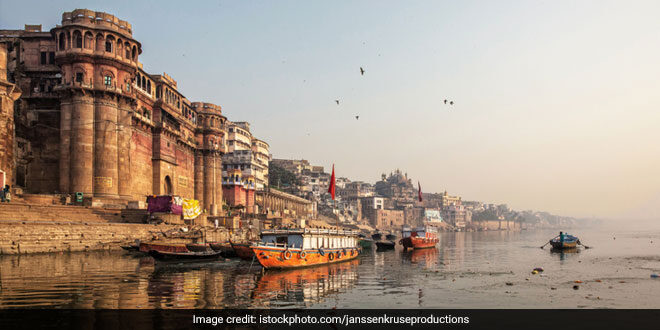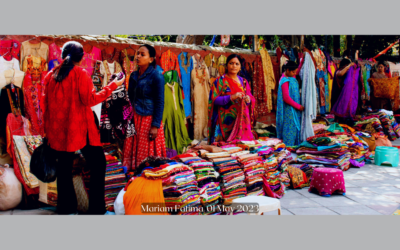Ganga is one of the most significant rivers in India. The river has appeared in almost all election campaigns, particularly in the cow belt region. In 2017, when the BJP was campaigning for the Uttar Pradesh elections, its slogan was “Gaon, Gau, Ganga and Gita.” Unfortunately, with Ganga still overloaded with pollutants, all the extensive talks regarding Ganga’s conservation seem like prattle.
Despite some lofty promises and ambitious schemes, some undeniable issues hindering the cleaning and rejuvenation process of Ganga remain neglected.
The “Clean Ganga Mission” has been operationalised for the past four decades. However, it has remained muddled in an imbroglio of half-baked policy formations and ineffective implementations. Under the leadership of Prime Minister Narendra Modi, the NDA, in June 2014, introduced the flagship program National Mission for Clean Ganga (NMCG). It outlined four multi-sectoral, multi-agency and multi-level approach policies viz Nirmal Ganga (Cleaning and Pollution Abatement), Aviral Ganga (improving flow), Gyan Ganga (Research knowledge Management), and Jan Ganga (Strengthening people-river connect). Under Nirmal Ganga alone, which primarily concerns the cleaning of the Ganga river, around 189 projects are in operation with an allocation of over Rs 270 billion. However, despite some lofty promises and ambitious schemes, some undeniable issues hindering the cleaning and rejuvenation process of Ganga remain neglected.
Like many other environmental concerns, Ganga’s cleaning project, too, has remained entangled in the environment vs development debate. Unchecked development activities have stagnated the rejuvenation process of the Ganga.
Environment vs Development
The debate of environment vs development is not new. However, there is no doubt that we must not re-think development projects to minimise environmental damage. India has been struggling with the problem of unsustainable development and environmental degradation since the early 1980s. The challenges posed by unsustainable developmental projects like hydropower plants, sand mining, and weak institutional capacity fail in executing the sound eco-friendly development policy. Like many other environmental concerns, Ganga’s cleaning project, too, has remained entangled in the environment vs development debate. Unchecked development activities have stagnated the rejuvenation process of the Ganga. India has been predicted to become the third-largest construction business market by 2025, and ramped-up construction activities have proven detrimental to Ganga’s rejuvenation. Experts believe unchecked inordinate sand mining also contributes to river course changes. The government’s actions against illegal sand mining have remained restricted to imposing bans and capping sand harvests. However, the government fails to address the system’s complicity and overlooks the business-political nexus.
Rampant sand mining activities remain one of the most destructive anthropogenic processes affecting the conservation of the Ganga.
Despite NMCG being the government’s flagship programme, in recent years, sand mining activities have continued and increased at the riverbank of Ganga in Bihar. Rampant sand mining activities remain one of the most destructive anthropogenic processes affecting the conservation of the Ganga. Excessive sand mining along the Ganga in states like Uttarakhand, Uttar Pradesh, and Bihar has caused a change in Ganga’s course, exposing dry patches. It has also led to the river shifting away from the city.
India is rushing headlong towards economic success and modernisation, and sand has become a fundamental component of modern society. It is also one of the accelerators of urbanisation, used on a colossal scale for developmental purposes, and Ganga is paying the price. The mining has shifted the course of the river Ganga in Patna and moved it five to six kilometres from its original orbit. The dry stretch of land aggravates pollution in already polluted cities like Patna. The repercussions of the on-going sand mining activities at Ganga are not limited to the water body. However, they have manifold impacts on humans and ecology-from health vulnerabilities in populations around the river to declining and drying of the aquifers. The continuance of unsustainable sand extraction can lead to droughts and the lowering of water aquifers which pose direct threats to human existence in the region.
In recent years, the present government has also made aggressive efforts to construct dams in the upper reaches of the Ganga river in the Himalayas. Experts have raised concerns about hydroelectric projects adversely impacting the flow of the Ganga. One thousand dams in the Ganga’s basin were obstructing the flow of its tributaries, hampering aviralta (continuous flow) as of 2019. However, the concerns remain unaddressed when dams have assumed symbolic significance in the development debate.
The ambitious plans of the government to clean Ganga grossly overlooked the affordances of public participation that could have led to improved results. Considering the impact of Ganga’s deteriorated condition on the inhabitants, the government’s efforts to engage the community have remained limited to perfunctory tokenism.
Community Participation
Last year in November, Jal Shakti minister Gajendra Singh Shekhawat said that keeping the Ganga clean is not just a mere project developed by the government; instead, society also needs to share the responsibility of keeping the Ganga clean. However, the non-fulfilment of the ambitious plans of the government to clean Ganga grossly overlooked the affordances of public participation that could have led to improved results. Considering the impact of Ganga’s deteriorated condition on the inhabitants, the government’s efforts to engage the community have remained limited to perfunctory tokenism.
The superficiality of the efforts to involve the community is reflected in the various initiatives undertaken by the government under the Namami Gange project. The progress report shared by the Nehru Yuva Kendra Sangathan emphasises peripheral activities such as holding drawing activities, sports competitions and yoga sessions on occasions such as Ganga Dussehra without much insight into the real issues around Ganga’s conservation. The government continues to rely on symbolism instead of capitalising on the immediate impacts of Ganga’s poor health that could drive the local community directly affected to engage in the process actively. The shortcoming in the government’s endeavour stems from its inability to realise how the local community’s role in the management of Ganga could result in the enhancement of knowledge as well as an increase in accountability. Ganga’s constant exploitation by the community dependent on it, without any ownership, also leads to zero accountability.
Despite having immense cultural and religious significance among the masses in India, the government has also failed to channel the public’s sentiments. It could have prompted community engagement, helped overcome socio-ecological barriers in Ganga’s conservation and set a precedent. The government is running overseas programmes such as ‘Ganga UK Connect’ for the Indian diaspora; when the local community continues active violation. It is hard to view the government’s strategy as a mere miscalculation.
The government turned a deaf ear when the community actors spoke for Ganga’s revival. Seers like Prof GD Agarwal, also known as Swami Sanand, died after 111 days of hunger strike in protest of the destructive policies harming the Ganga river.
Absence of Regional Cooperation
The Ganga’s flow (Aviral Dhara) flows from Haridwar in Uttarakhand to Sunderbans in Bengal. The multiplicity in the regions Ganga flows through is not reflected in the policy formulation and implementation practices. Instead, it is a highly centralised outlook on the government’s part. The central government established several district bodies entrusted to keep track and organise meetings to lay out a plan at the local levels. Seemingly, there are no disagreements at the structural or organisational level of NMCG, which is the primary body that provides a bureaucratic mechanism to clean and rejuvenate the Ganga.
The bureaucratic mechanisms include devising the task force with chief secretaries on board from the different states through which Ganga flows and Union Water Resources Minister as its head. The notification issued by the Jal Shakti (Water Resources) Ministry regarding the task force meeting was promised once in three months. However, looking at its trajectory, it only met twice after its creation in October 2016. The State Ganga Committee was created as a nodal agency to implement several programmes to clean and rejuvenate Ganga under the aegis of the central government. It is also responsible for auditing the expenses and providing the remedial measures for implementing the policies.
The practices adopted by the government point towards excessive centralisation in implementing NMCG. It has overlooked the modulations that different state actors could bring to create a more effective roadmap for Ganga’s rejuvenation.
The practices adopted by the government point towards excessive centralisation in implementing NMCG. It has overlooked the modulations that different state actors could bring to create a more effective roadmap for Ganga’s rejuvenation. NMCG could have benefitted had it satisfactorily recognised the differences in the issues at the state level. However, the neglect by bodies such as the task force under the Jal Shakti Ministry to enforce policies on-ground has exposed the fragility of policies that have towering envisions to clean Ganga.
For a country like India, Ganga not only holds immense cultural significance, but 40% of India’s population is directly or indirectly dependent on it. Therefore, the call for its rejuvenation is inescapable. With no appreciable results in the past 40 years, looking at the caveats of policies meant for Ganga’s revival is crucial. Effective policy-making will require India to stop tokenism and pandering to populist moods and re-think policies that serve long-term ecological goals. Ganga’s present scale of devastation serves as a reminder of its history in Jain literary evidence Tithogali Painniya, how its overexploitation brought down Maurya’s Patliputra.
MD. Imtiyaz is a doctoral candidate at the Department of Political Science, Jamia Millia Islamia, New Delhi. Midhat Fatimah is a multimedia journalist and researcher.




